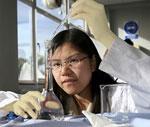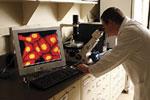Why and How Do We Study Environmental Health?
The environment is everything around us, so it has a big impact on our health and every part of our lives. Have you heard about people getting sick from water pollution or having trouble breathing because of air pollution? Things like that can happen when there are things in the environment that are bad for us.
That is why NIEHS studies the health effects of the environment! There are laws and regulations to help protect us from many of the things in our environment that might make us sick. This is because scientists at NIEHS and around the world have been studying the environment and everything around us in our environment.
Today, the fact that smoking causes lung cancer may seem obvious. But scientists had to do research for many years to compare smokers with non-smokers. They had to do this to make sure that it wasn’t one of many other things that people might have been around that caused the cancer. Based on the results of those studies, people can be warned of the dangers of smoking. The government can make decisions as to whether or not to "regulate" the sale of cigarettes! You can learn more about the dangers of smoking from Mama Didn't Know.
Research is also the way scientists found out that exercise reduces the risk of heart attacks. They had to study thousands of people over many years to see whether people who got enough exercise had fewer heart attacks than people who did not exercise. And there are many, many more things we know today because of the efforts of research scientists.
Environmental health research studies are valuable, but they have limits. Diseases such as cancer may not show up in our bodies for many years, so people may be exposed for a very long time before a problem is spotted. So another important research method is the testing in animals. Those studies provide us with much faster answers. Mice and rats may show signs of health problems after only 2 years or so. It might take 30 or 40 years for health problems to appear in people after they have been exposed. Scientists can frequently check the mice for signs of disease and use that information to decide much more quickly if there is a risk to humans.
Some people don't believe that their bodies are enough like those of mice and rats to be hurt by the same materials. Humans are very much like mice and rats "genetically." In fact, most things known to cause cancer in mice and rats also cause cancer in people.
Our research methods are always being improved. At NIEHS, we are always working on new types of studies that use fewer animals and take less time and money to perform. NIEHS scientists are working on ways to help predict the harmful effects of chemicals using cell cultures, microorganisms, some types of small fish, and computer models. By combining old techniques with new, scientists can find out more quickly how things we are exposed to in our environment can result in sickness. Once we know where the dangers might be, we can reduce the number of diseases and deaths and help prevent people from being exposed to things that can harm them.
Wouldn't you like to be a part of this exciting effort? You can be! One good way to get started is to ask your teachers for guidance when selecting your future classes and planning your college education. That way you can concentrate on courses that will prepare you for a career as a research scientist!






